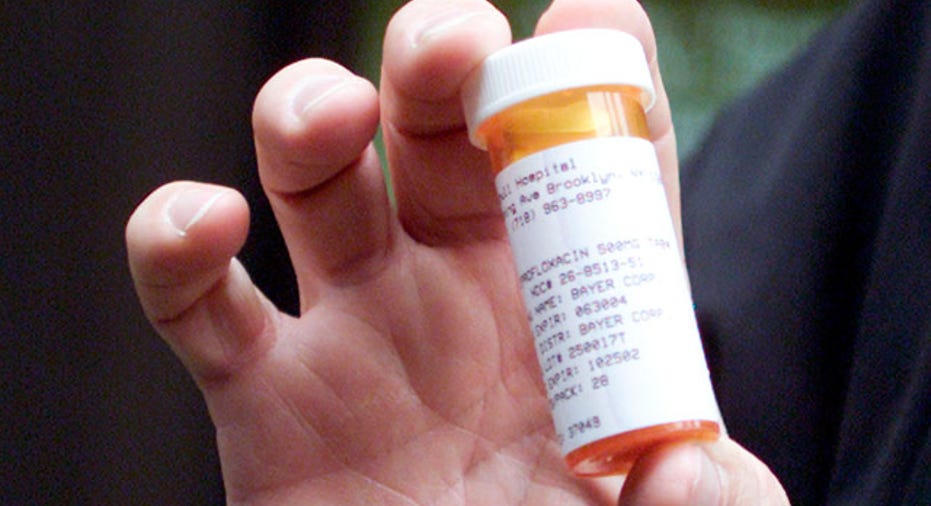Antibiotics Under Siege; Interest Groups Call for Action

Antibiotics are at risk because of the rapid increase of resistant microorganisms and the stakes are high.
Antibiotic resistance costs an estimated $20 billion annually to the U.S. health-care system and increases patient hospital stays by more than 8 million days, according to a report from the Infectious Diseases Society of America [IDSA].
The antibiotic-resistant pathogens that exist naturally today can be bioengineered to make them resistant to currently available antibiotics, creating a public health crisis and national security threat rolled into one.
The World Health Organization (WHO) has identified Antimicrobial resistance (AMR) as one of the three greatest threats to human health and WHO’s World Health Day 2011 is centered on the theme.
Antimicrobial resistance develops when a microorganism mutates or acquires a resistant gene, making the microorganism resistant to an antimicrobial medicine to which it was previously sensitive.
Today, resistant organisms including bacteria, viruses, fungi and some parasites are able to withstand attacks by antimicrobial medicines such as antibiotics, antivirals and antimalarials, making standard treatments ineffective.
AMR will compromise dramatic advances for treating cancer, transplants, prosthetic devices, joint replacement, and neonatal care, as will medical tourism, says Dr. James Hughes, IDSA president and professor of medicine and public health at Emory University.
This week WHO called for urgent and concerted action by governments, health professionals and civilians to slow down the spread of drug resistance, limit its impact and preserve medical advances for future generations.
Similarly, IDSA has launched its “10 x 20” initiative, which calls for public/private partnerships in the development of 10 new safe and effective systemic antibiotics by 2020.
Misuse of Antimicrobial Medicines
Experts say AMRs are caused by the misuse of antimicrobials and according to the IDSA, as much as 50% of antibiotic use in human medicine is unnecessary, inappropriate or irrational, including use in animal husbandry. Other contributors include when patients do not take a full course of a prescribed antimicrobial, poor infection prevention and control practices and weak or absent antibiotic stewardship and surveillance.
“Antibiotics are prescribed and used too abundantly,” says Dr. Donald Goldmann, senior vice president at the Institute for Healthcare Improvement [IHI] and professor of pediatrics at Harvard Medical School.
Sinusitis is treated too often with antibiotics, and viral infections, bronchitis and the common cold don’t warrant antibiotic use. “One would have to treat seven to 14 cases of otitis, or earache, with antibiotics for one patient to benefit from the drug because many of the cases are due to viruses or get better on their own,” Goldmann says.
“This is a real problem for clinicians,” says Hughes. “A patient presents with fever and other symptoms and there’s pressure to make the patient feel better.”
Extensive antibiotic usage for patients who are seriously ill and hospitalized creates its own problems. High-potency drugs have the unintended consequence of attacking the good organisms in the colon, says Dr. John Bartlett, professor of medicine at Johns Hopkins and chief of infectious diseases at Johns Hopkins Hospital from 1980 to 2006. “Did you know that the average individual is “10% person, 90% bacteria from the skin, colon and mouth?” he says.
No one is immune, and the elderly, seriously-ill patients and people with compromised immune systems are particularly threatened by antibiotic resistance. But infections caused by resistant bacteria can strike anyone --including the young and healthy.
Community-acquired outbreaks of methicillin-resistant Staphylococcus aureus (MRSA), once confined to hospitals, have become an issue for athletes. Physical contact and sharing team clothing or equipment may lead to the spread of infection in these otherwise healthy people, public health officials believe.
In September 2003, a MRSA outbreak occurred among the Miami Dolphins football team hospitalizing two players.
Pipeline Drying Up
The lack of financial incentives has slowed research and development (R&D) of antibiotics and identifying good drug candidates requires substantial time and money for pharmaceutical companies--at least 10 years in development and normally more than $1.7 billion in cost.
The return on investment on a seven, 10 or 14-day antibiotic pales by comparison to a lifestyle drug, some of them blockbusters that treat chronic conditions for prolonged, perhaps lifelong periods. Drugs that do make it to market face limited profitability, especially when effective antibiotic stewardship programs are in place.
Most pharmaceutical companies have withdrawn from antibiotic R&D: from 1983 to 1987, 16 new antibiotics were approved by the US Food and Drug Administration (FDA); from 2003 to 2007 only five were approved. And since 2008, the FDA has approved only two.
“At least a half dozen promising drugs in advanced development have been pulled from the market,” often when fatal events occur,” says Goldmann.
IDSA is suggesting that the FDA to streamline antibiotic discovery and stimulate industry-sponsored R&D by publishing updated guidelines for clinical trials of anti-infectives; encouraging innovative clinical trial designs that result in a better understanding of drug efficacy; defining new ways to determine an antibiotic’s effectiveness; and granting accelerated approval for antibiotics that treat targeted pathogens.
People we see in hospitals today are much older than they used to be,” says Bartlett. “We’re keeping people alive and functional, but in the process we encounter some risks. That is the awful part of medicine.”
“Aspirational,” says Hughes of the quest to totally eliminate AMR infections, but emphasizes the need to press onward—a goal shared by his warrior-like infectious disease colleagues. “We don’t want to return to the 1930s when a paper cut turned into a staphylococcus and a fatal event.”



















